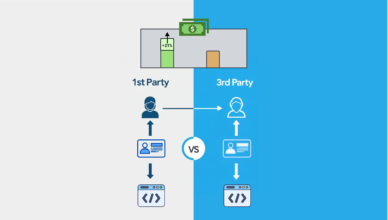The volume of consumer data is growing rapidly, fueled by video streaming needs, connected devices and apps and an increasing need to share content and communications digitally. Especially since many of us now work from home. Research firm, IDC, predicted that more than 59 zettabytes (ZB) of data was created, captured, copied, and consumed in the world in 2020 (Global DataSphere).
And this data has become extremely valuable for businesses. In the advertising industry alone, where data is used to deliver targeted ads, the global marketing data market is expected to reach 52.26 billion USD in 2021. A complex network of buyers and sellers has emerged to facilitate this causing a decline in transparency and control over consumer data.
But exploitation of data is also prolific
The exploitation of data is one of the biggest challenges of current times. James Bridle notes in his book, New Dark Age: Technology and the End of the Future, that “while peak knowledge may be closer than we think, the exploitation of raw information can continue infinitely, along with the damage it does to us and our ability to reckon with the world.”
Fraud, manipulation and unethical data practices are rife. And it’s not just small-time hackers, many large global organizations are responsible. In September 2021, WhatsApp messaging service was fined nearly $270 million by Irish authorities for not being transparent about how it uses data.
The advertising industry has been one of the chief culprits in abusing personal information for financial gain. Global losses to ad fraud exceeded $35 billion in 2020, according to the World Federation of Advertisers.” Ad tech players have been found to be providing preferential treatment, forming monopolies and illegally profiting from consumer data with little pushback.
Regulations and guidance are emerging, but too slowly
Up until now, there has been limited regulation of the use of consumer data in advertising. When GDPR was introduced in Europe in 2018, it was the first time that advertisers had to reconsider their data practices. In the US, regulations are still forming; CCPA (soon to be CPRA) came into effect in 2020 but other states have been slow to follow suit. These regulations do help with data transparency and consumer opt-outs but there’s a long way to go in stopping malpractice.
Data’s role within advertising has become far more advanced than lawmakers can comprehend. Now they’re looking for help. As an example, The Federal Trade Commission (FTC) in the US put out a call for people who understand ad tech in June 2021. It plans to approach investigations “with an interdisciplinary lens including [with] privacy engineers and designers, financial analysts and product managers, and yes, technologists.” It’s going to take time to adapt and the advertising industry must take responsibility to change rather than waiting for laws to evolve.
Advertisers must take the lead
According to a Forrester survey, in 2020 only 27% of global marketing decision-makers are concerned about data ethics. This needs to change. Doing just enough to stay on the right side of legal repercussions isn’t a good business strategy. Advertisers should be proactive rather than waiting for browsers and regulators to enforce change. They must rethink data processes, carefully assess partners, protect data they store and improve visibility and choice for consumers. Budgeting should include data protection, fraud prevention and investment in ethical data teams, as well as ad tech.
Consumers should be given some say in how their data is used. But it’s important not to put all the onus on them to read lengthy data policies or scroll through pages of settings in order to opt-out. Data privacy controls, like cookie opt-outs or App Tracking settings, need to be simple. It should be easy for consumers to make educated decisions about the businesses they trust.
Advertisers should collect data, respectfully. And only if they really need it. By carefully considering their objectives before increasing data collection or building identity graphs across channels, advertisers will have a balanced marketing strategy that uses identity where essential, and then incorporates alternative privacy-focused strategies, such as publisher cohorts. Intent and preference data can also be used to tailor advertising.
Individual identifiers may be useful in developing relevant products and services or for personalizing web experiences. But they aren’t necessarily required for successful advertising campaigns. As advertisers evaluate future media buying strategies, they should put data ethics and consumer preferences at the forefront.









